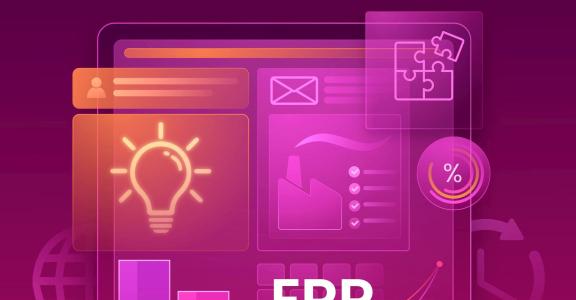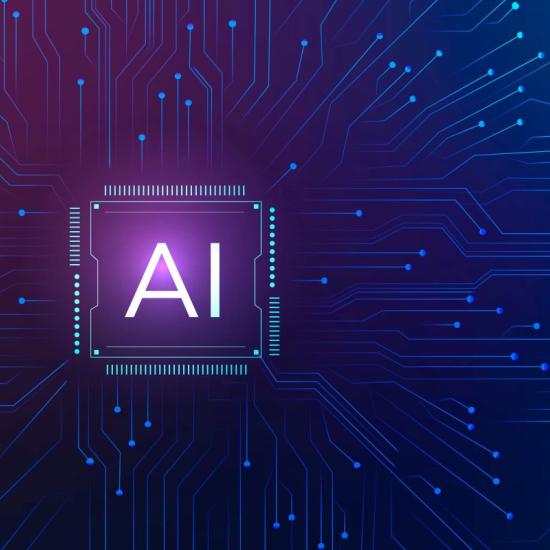Added value and possible pitfalls of additional functionality
The use of a well-selected Enterprise Resource Planning (ERP) system has become essential for most SMEs wishing to manage and streamline business processes efficiently. Although ERP packages offer a wide range of standard functionality, customisation might be needed to meet an organisation's unique needs.
Modern technologies offer a range of options for developing this customisation and expanding the functionality of an ERP package. Below we introduce some of these technologies and explain what they are mainly used for along with possible disadvantages.
Why do we need customisation for a standard ERP?
While many ERP providers may be reluctant to offer extensive customisation, there are several reasons why manufacturing companies may want to add additional functionality to their ERP systems:
- Specific business processes: Some organisations have unique business processes that are not fully supported by generic ERP solutions. Customisation can be used to tailor ERP functionality to the specific needs of a company.
- Industry-specific requirements: Certain industries have specific regulations, standards or requirements that are not present as standard in general ERP solutions. Customisation may be needed to meet these specific needs.
- Competitive Advantages: Changes to the ERP system can give an organisation a competitive advantage by adding unique functionality that is not available to competitors.
- Integrating existing systems: Companies often have systems in use that need to integrate seamlessly with the ERP system, and customisation may be needed to do this.
- Improved efficiency: Customisation can be used to automate or streamline specific processes, thereby improving the overall efficiency of business operations.
- User Acceptance: Adjustments to the ERP system can also improve the user experience, thereby increasing employee acceptance.
- Speed of innovation: Some organisations need to be able to innovate quickly in response to market changes. Customisation allows them to quickly add new features and adapt to changing business conditions.
- Future scalability: Customisation can prepare the ERP solution for future growth and changing business needs.
While customisation should be approached with caution due to potential complexity and maintenance issues, this can itself be a reason for organisations to add functionality to their ERP systems. It is important to take a balanced approach and work with experienced ERP implementation partners to achieve the best possible solution.
State-of-the-art technologies for customising ERP systems
In addition to the fact that most of today's ERP packages are modular - so that initially unnecessary modules can be added later - we can use the following technologies for additional functionality:
1. Application programming interfaces (APIs)
APIs are a crucial tool for customising an ERP system. They allow developers to connect to the core functionalities of the ERP package and make specific modifications. With well-designed APIs, companies can add new functionalities, adapt existing processes and even integrate with other systems within the organisation. Use RESTful or GraphQL APIs for efficient and standardised communication between systems.
2. Workflow- and business process management (BPM) tools
Companies can develop customised processes in an ERP system by using workflow- and BPM tools. These enable organisations to customise complex workflows and business processes without the need for in-depth programming knowledge. By using visual interfaces and drag-and-drop functionality, users can easily define processes, set up approval flows, and implement automations.
3. Business intelligence (BI) tools
BI tools provide in-depth analysis capabilities for data stored in an ERP system. By developing custom reports and dashboards using BI tools, organisations can obtain specific information and insights relevant to their business activities. These tools allow users to visualise data, identify trends, and perform real-time analytics, enabling them to make better decisions on the basis of personalised information.
4. Low-code and no-code development platforms
Low-code and no-code development platforms make it possible to develop custom functionalities without in-depth programming knowledge. These platforms provide visual interfaces, pre-built components and templates, allowing users to create custom functionalities by simply dragging and dropping elements and configuring logic. This gives companies a fast and cost-effective way to add customisation to their ERP package, without relying on expensive development resources.
5. Microservices architecture
The microservices architecture is an approach in which an ERP system is divided into smaller, independent and interoperable services. This approach makes it easier to develop and implement custom functionalities, as each service can be customised without affecting the operation of the entire system. Using microservices, organisations can customise specific business processes or functionalities, while the rest of the ERP system remains unchanged.
6. Containerisation and orchestration
Containerisation and orchestration allow applications and their dependencies to be isolated and managed efficiently. Containerisation - often performed with tools such as Docker - packages applications and their environments into standardised containers, allowing them to run consistently across environments. Orchestration tools such as Kubernetes provide advanced management of these containers, including scalability, automatic deployment, and fault tolerance. The main benefit of containerisation and orchestration is the ability to deploy custom applications quickly and reliably, regardless of the environment. However, there may be a downside in terms of complexity of implementation and the learning curve, especially for organisations new to these technologies.
7. Event-driven architecture
Event-Driven Architecture (EDA) involves the use of events to streamline communication and coordination between different modules or components. In EDA, events, such as updates to data or changes to system states, are used as triggers to activate specific actions or processes. The main advantage of EDA is the flexibility and scalability it offers, allowing ERP systems to respond dynamically to changing conditions without having to rely on strictly defined workflows. This makes customisation in ERP adaptable to evolving business needs. However, a major drawback is the complexity of implementation and management, because designing effective event-driven architecture requires specific expertise and can be prone to complications in error handling and system management.
8. Machine learning (and artificial intelligence) integrations
Machine learning integrations use advanced algorithms and models to generate intelligent analyses and predictions based on the available data. The main benefit of ML integrations is the ability to gain better insights and automate complex decision-making processes. This allows ERP systems to adapt to changing circumstances and deliver better results. It does, however, depend on accurate data and the relevant knowledge being available for generating the model.
9. Software development kits (SDKs)
Many ERP providers also offer software development kits (SDKs). These provide developers with a set of tools, libraries and documentation to add specific functionality to existing ERP software. The main advantage of SDK tools is their standardised approach to development, which makes it easier for developers to access APIs and functionalities of the ERP system. This, in turn, makes it easier to customise ERP functionalities to specific business needs. The company, however, then becomes dependent on the supplier: because the tools are specific to a particular ERP system, it can be difficult to maintain and migrate the customisation when changing ERP vendor or when upgrading to new versions of the software (although the latter should no longer be the case today). This makes it important to consider the long-term effect on the flexibility of the ERP system.
Conclusion
A wide range of technologies is available for customising a modern ERP package. This allows organisations to meet their unique needs without having to rely entirely on third-party developers. Companies can customise and optimise their ERP systems, giving them a competitive edge and increasing efficiency and productivity.
Do you have questions about ERP and customisation or would like to know more about it? Then please feel free to contact us!




